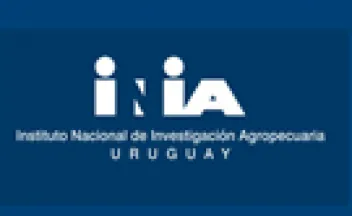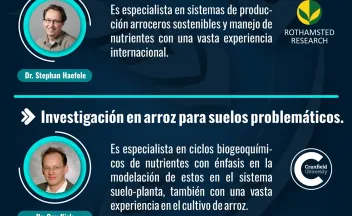
Instituto Nacional de Investigación Agropecuaria


ABSTRACT.- Wheat blast, caused by the Pyricularia oryzae Triticum lineage (PoT), first emerged in Brazil and quickly spread to neighboring countries. Its recent appearance in Bangladesh and Zambia highlights a need to understand the disease's population biology and epidemiology so as to mitigate pandemic outbreaks. Current knowledge is mostly based on characterizations of Brazilian wheat blast isolates and comparison with isolates from non-wheat, endemic grasses.

ABSTRACT.- Background and aims:Since 1750, the species-rich grasslands native to the Río de la Plata basin in southern South America have sustained low-input livestock production. Typically, these grasslands have low herbage phosphorus (P) concentration, and P deficiency in livestock is not rare. Worldwide, P fertilization is used to increase the productivity and nutritive value of grasslands, but it is unknown whether the Río de la Plata grasslands are limited by P availability.

ABSTRACT.- Rice is a crop that requires a large amount of water throughout its production cycle to ensure a good yield, resulting in higher water consumption compared to other crops. In Uruguay, about 160,000 ha/year are planted, requiring about 1,760 hm3/year of water, with a very high international average productivity of 9,000 kg/ha. Irrigation is generally carried out by surface/flooding, with water passing through dug channels where gates are used to regulate the flow, and in some cases measurement devices are installed.


The Uruguayan rice-livestock system is one of the most productive worldwide, adding meagre amounts of N as fertiliser and reaching a very tight nitrogen (N) balance (N-BAL), low N surplus (N-SUR) and a high system N use efficiency (NUE), being a good example of a circular economy system.

ABSTRACT.- The UK Government has set an ambitious target of achieving a national "net-zero" greenhouse gas economy by 2050. Agriculture is arguably placed at the heart of achieving net zero, as it plays a unique role as both a producer of GHG emissions and a sector that has the capacity via land use to capture carbon (C) when managed appropriately, thus reducing the concentration of carbon dioxide (CO2) in the atmosphere.

Sustainability of water quality and quantity in Merín Lagoon (ML) basin has become an issue of concern, recognizing nutrient runoff from agricultural environment as one of the major sources influencing water impairment. The main area of rice cultivation in Uruguay is located in this watershed.

Integrated rice-livestock systems were key for a sustained yield increase with decent resource-use efficiency and environmental indicators during 50 yrs. in Uruguay. The increased trends for intensification in cropping systems may prompt rice-livestock systems for decoupling and losing synergies. We summarize evidence about the sustainability of rice-livestock systems in Uruguay using indicators from farm data and a long-term experiment.